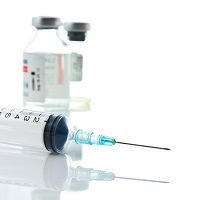Pain in the Neck? FDA Updates Epidural Steroid Injections Guidelines
With the increasing number of patients turning to epidural steroid injections for pain relief, specialists with the US Food and Drug Administration (FDA) Safe Use Initiative gathered specialists to improve the procedure.

With the increasing number of patients turning to epidural steroid injections for pain relief, specialists with the US Food and Drug Administration (FDA) Safe Use Initiative gathered specialists to improve the procedure.
JAMA Internal Medicine examined the latest FDA guidelines along with the rare adverse effects that many studies fail to mention.
The epidural is given either with the interlaminar approach, where the tip of the needle is put in the posterior epidural space, or the transforaminal approach, where the tip of the needle is placed where the spinal nerve exits the spinal canal in an intervertebral foramina. Many clinicians typically choose the latter, because the drug is close to the necessary spinal nerve and dorsal root ganglion as opposed to the posterior epidural space, which happens with the interlaminar approach.
In 2011, nearly 2.3 million epidural steroid injections were performed on Medicare patients alone; although rare, they can cause serious central nervous system injuries. As such, practitioners should be aware of its possible complications like, paraplegia, quadriplegia, medullary infarct, cerebellar infarct, and death — all of which have been reported in the past. Spinal cord injury has been associated with injections in the cervical epidural space without following protocol.
However, with the proper precautionary steps provided by the FDA, the injection should be even safer. The in depth process to create the guidelines started with multiple national organizations voting on the working group’s recommendations. Made up of specialists in anesthesiology, pain medicine, neurosurgery, radiology, orthopedic surgery, and physical medicine and rehabilitation, the representatives and board of directors revised the recommendations.
While epidural steroid injections are used for short-term low back and neck pain relief, the report noted that research has not addressed how particulate and nonparticulate steroids compare in terms of relief.
The committee hopes to reduce or eliminate the serious injuries associated with the injections with the improved FDA guidelines:
1. All cervical and lumbar interlaminar epidural steroid injections should be performed using image guidance, with appropriate anteroposterior, lateral, or contralateral oblique views and a test dose of contrast medium. (There has been a case report of lower extremity paralysis after lumbar interlaminar injection without fluoroscopy and a case report of paraplegia after thoracic interlaminar injection when fluoroscopy was used but contrast was not injected.)
2. Cervical and lumbar transforaminal epidural steroid injections should be performed by injecting contrast medium under real-time fluoroscopy or digital subtraction imaging, before injecting any substance that may be hazardous to the patient. (The use of digital subtraction imaging has been shown to be more effective in detecting intravascular injection than syringe aspiration alone.)
3. Cervical interlaminar epidural steroid injections are recommended to be performed at C7-T1, but preferably not higher than the C6-7 level. (The cervical epidural space is widest at the C6-T1 levels. Gaps in the ligamentum flavum are more frequent with ascending cervical levels.)
4. No cervical interlaminar epidural steroid injection should be undertaken, at any segmental level, without preprocedural review of prior imaging studies demonstrating sufficient epidural spatial dimensions for needle placement at the target level.
5. Particulate steroids should not be used in therapeutic cervical transforaminal injections. (Injuries following nonparticulate injections were temporary, whereas paraplegias after particulate steroids were permanent. If the nerve root involved is at a higher level, i.e., C5, most pain medicine physicians perform an interlaminar injection at C6-7 or C7-T1, insert a catheter, and advance it to C5. For diagnostic injections, to help the surgeon identify the affected nerve root, pain physicians perform transforaminal injections using local anesthetic, with or without a nonparticulate dexamethasone.)
6. A nonparticulate steroid (e.g., dexamethasone) should be used for the initial injection in lumbar transforaminal epidural injections.
7. There are situations in which particulate steroids could be used in the performance of lumbar transforaminal epidural steroid injections. (This is because the lumbar transforaminal area is wider than in the cervical regions. If relief from a nonparticulate steroid is of short duration, some physicians will inject a steroid containing smaller particles, either betamethasone or triamcinolone.)
